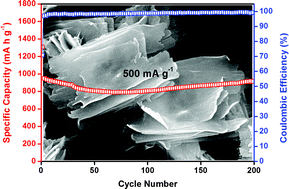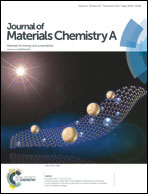Synthesis of self-stacked CuFe2O4–Fe2O3 porous nanosheets as a high performance Li-ion battery anode†
Abstract
Self-stacked CuFe2O4–Fe2O3 porous nanosheets were prepared via a facile polyol-mediated route followed by calcination. Because of its highly porous structures and good electrical and ion conductivity of the well-dispersed CuFe2O4 phase in the matrix, the hybrid material exhibits high specific capacity of 910 mA h g−1 at 0.5 C after 200 cycles, superior capacity retention (0.02% capacity loss per cycle) and good rate capability (417 mA h g−1 at 4 C) as a promising anode material for Li-ion batteries.


 Please wait while we load your content...
Please wait while we load your content...